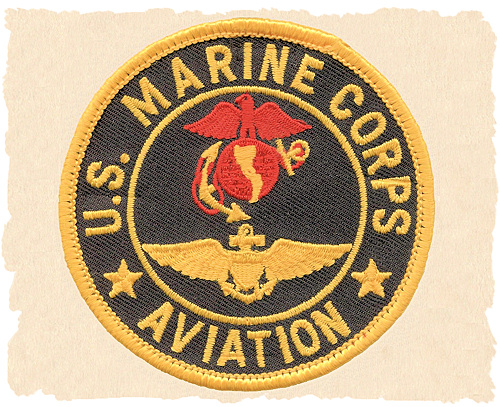VMA(AW)-224 Scrap Book
USS Coral Sea
Squadron Notes
Overview of Squadron Activities
Squadron Notes taken from Command Chronology Reports and various other sources.
Marine All Weather Attack Squadron 224, MAG-14 & Carrier Air Wing 15.
July 1 - December 31, 1971.
Location: MCAS Cherry Point, NC July 1, 1971 to September 15, 1971.
USS Coral Sea, September 15 1971 to December 31, 1971.
Organizational Data: Lieutenant Colonel B.R. STANDLEY, Commanding Officer.
Lieutenant Colonel R.E. BRUBAKER, Executive Officer
Captain R.L. HARRIS, Administrative Officer
Captain P.A. WOJCIECHOWSKI, Intelligence Officer.
Major C.D. SMITH, Operations Officer
Major R.L. GONDEK, Aircraft Maintenance Officer (July)
Lt. Commander S.A. BELCHER III, Aircraft Maintenance Officer (Aug-Dec)
Lt. Commander S.A. BELCHER III, Plans & Analysis Officer (July)
Major R.L. GONDEK, Plans & Analysis Officer (Aug-Dec)
Captain A.K. ALBRECHT, Aviation Safety Officer
Lt. (MC) J.B. GLENN, Flight Surgeon
SGTMAJ J.S. BISESI, Sergeant Major
Month Officers Enlisted
July 46 276
August 46 289
September 45 295
October 44 295
November 44 293
December 44 293
Sequence of Events:
July 6-7, 1971 In preparation for the Squadron's Westpac deployment, 21 pilots including Colonel F.R. NOWADNICK, Commanding Officer of MAG-14, completed initial day carrier qualifications aboard the USS Lexington at NAS Pensacola, Florida. Each pilot received two touch and go's and ten arrested landings and catapults.
July 17-30, 1971 VMA(AW-224 deployed to NAAS Fallon, Nevada. During the ensuing two weeks, intensive Phase II and Phase III weapons training was conducted in conjunction with the deployed Carrier Air Wing 15 Squadrons.
Aug 30 - Sept 1, 1971 Follow-on day and initial night carrier qualifications aboard the USS Lexington were conducted for 19 Squadron pilots.
September 15, 1971 On this date VMA(AW)-224 arrived at Naval air Station, Alameda, California and became a Squadron within Carrier Air Wing 15, embarked aboard the USS Coral Sea (CVA-43).
September 27, 1971 On this date, LTCOL R.E. BRUBAKER made his 100th arrested landing aboard the Coral Sea (previous CVA-42 cruise landings included). Centurion award and CNO Safety award were presented at the same time by Captain W.H. HARRIS, Commanding Officer, USS Coral Sea.
October 12-20, 1971 Squadron participation in CVW-15 Operational Readiness Inspection.
November 12, 1971 USS Coral Sea departed NAS Alameda for Pearl Harbor, Hawaii.
November 17, 1971 LDCR S.A. BELCHER III became the Squadron's second centurion.
November 22, 1971 USS Coral Sea arrived at Nava Base, Pearl Harbor, Hawaii. Squadron representatives attended FMPAC/CINCPACFLT per-deployment brief.
November 24, 1971 VMA(AW)-224 received and overall grade of excellent during CVW-15's Operational Readiness Exercise.
November 27, 1971 USS Coral Sea departed Naval Base, Pearl Harbor for Westpac.
December 9, 1971 USS Coral Sea arrived at NAS Cubi Point, Republic of the Philippines.
December 15, 1971 USS Coral Sea arrived at Yankee Station and commenced first line period.
**********************************************************************
Marine All Weather Attack Squadron 224, Carrier Air Wing 15.
January 1 - June 30 1972.
Location: USS Coral Sea, Westpac.
Organizational Data: Lieutenant Colonel B.R. STANDLEY, Commanding Officer. (Jan 1 - May 29)
Lieutenant Colonel R.E. BRUBAKER, Commanding Officer (May 29-June 30)
Lieutenant Colonel R.E. BRUBAKER, Executive Officer (Jan 1-May 29)
Major R.L. GONDEK, Executive Officer (May 29-June 30)
Captain R.L. HARRIS, Administrative Officer
Captain P.A. WOJCIECHOWSKI, Intelligence Officer.
Major C.D. SMITH, Operations Officer (Jan 1-June 24)
Captain W.D. CARR, Operations Officer (June 24-June 30)
Lt. Commander S.A. BELCHER III, Aircraft Maintenance Officer (Jan 1-June 29)
Major P.C. KERWIN, Aircraft Maintenance Officer (June 29-June 30)
Captain A.K. ALBRECHT, Aviation Safety Officer (Jan 1- June 30)
Captain C.H. KINNEY, Aviation Safety Officer (July 1)
Lt. (MC) J.B. GLENN, Flight Surgeon (Jan 1-May 31)
SGTMAJ J.S. BISESI, Sergeant Major
Month Officers Enlisted
January 44 295
February 44 293
March 44 291
April 45 339
May 44 336
June 36 281
Sequence of Events:
January 1-16, 1972 VMA(AW)-224's first line period on Yankee Station formed a firm foundation for combat operations that followed. Due to overcast weather conditions, the A6 system became invaluable as th squadron took on the arduous job of interdicting enemy supplies moving south through the major Laotian passes, Ban Karai and Mu Gia. In daylight hours squadron acted as pathfinders, leading other aircraft to targets to expend their ordnance above the overcast. At night squadron flew "Commando Bolt Flasher" missions where, aided by Air Force sensor, they ran AMTI against enemy truck traffic. During the line period in operation "Proud Deep" the squadron distinguished itself when, once again due to overcast weather, A6's acted as pathfinders leading whole divisions to expend their ordnance on target. In all, eighteen Air Wing strikes were lead into North Vietnam by this squadron.
January 18-25, 1972 In port at NAS Cubi Point, Philippines.
Jan 27 - Feb 17, 1972 During its second line period, the squadron again assumed the mission of interdicting supply routes in Laos. More and more sorties were able to work with airborne FAC's as weather improved, but even when overcast conditions occurred the A^ accomplished the mission by "Commando Nail" of assigned targets. Working with FAC's provided the squadron first visual results of their bombing.
February 18-29, 1972 In port NAS Cubi Point, Philippines.
March 2-14, 1972 The third line period became a continuation of the second as the squadron continued interdiction of supply routes in Laos. Again overcast weather, and being additionally fragged with missions dropping long delay ordnance on designated interdiction points, required almost complete reliance on the A6 system.
March 15-21, 1971 Saddled with an additional mission to supply Standard Arm support for Air Wing Fifteen, the squadron was assigned three (3) A6-B aircraft which further required augmentation of fifty-five (55) inexperienced enlisted personnel and two likewise inexperienced aircrews from the First Marine Aircraft Wing. Although the A6-B system was completely foreign to the squadron, with outstanding assistance from General Dynamics Tech Rep Mr. Ed DUVALL, an intensive and effective ground training program was initiated. During this in port period six aircrews were thoroughly briefed on the A6-B system and the training of inexperienced technicians was begun. Also during this active in port period, the two inexperienced pilots began an equally intensive program of FMLP's in preparation for carrier qualifications.
March 23- May 11, 1972 The fourth and longest line period was particularly diverse and exercised almost every type mission that the squadron would encounter. It was the first time the squadron had utilized the A6-B in combat. Although parts and airframes created some initial problems, during the course of the line period the squadron flew ninety-five (95) A6-B sorties and fired over forty-seven (47) Standard Arm missiles with an estimated thirty-nine (39) percent success against fansong radars. Initially starting with flight operations over Laos, we were soon called upon in direct support of the South Vietnamese. Continuing to fly night "Commando Bolt" missions against enemy truck traffic in Laos, daylight hours were devoted to close-air-support and interdiction of supplies moving south from the DMZ.
April 9, 1972 The squadron suffered its first loss when Major C.D. SMITH, NA and 1st Lt. S.D. KETCHIE, NFO were hit by enemy fire on a night "Commando Bolt" mission. Over the next five (5) days the whole Air Wing participated in the extensive and successful SAR of Major SMITH. 1st Lt. KETCHIE remained missing in action. On one of these missions, Cdr. R.E. SHEETS, who had just recently accepted command of Air Wing Fifteen and who was flying one of his first combat missions in the A6, led a flight of six (6) squadron A6's to provide close-air-support for a firebase being overrun in South Vietnam. Under an airborne FAC's control all aircraft delivered their ordnance with deadly accuracy. When the smoke cleared, the firebase commander attributed the flight with saving his positions and 150 enemy KBA.
April 16, 1972 With operation "Line Backer" the center of activity moved north. The squadron began extensive flight operations in North Vietnam, initially flying daylight armed recce missions and night "Rolling Thunder" missions in Route Packages I, II, III and VI. As the line period progressed the frequency of coordinated Air Wing "Alpha" strikes increased, with most targets now in Route Package VI. The Air Wing had become a cohesive unit and tactics it used began to vary. During this line period the squadron was instrumental in initiating low level "Alpha" strikes against a variety of targets.
May 3, 1972 Tragedy struck again when another A6-A, with 1st Lt. J.W. McDONALD, NA and Captain D.B. WILLIAMS, NFO, was lost due to direct enemy action in Route Package I, NVN. Both crew members are missing in action.
May 9, 1972 Toward the end of the line period the squadron's versatility was again exercised when Cdr SHEETS led three A6-A's as the lead element mining Haiphong Harbor, as VMA(AW)-224 and USS Coral Sea became part of history.
May 12-13, 1972 In port NAS Cubi Point, Philippines.
May 23 - June 11, 1972 Continuing the momentum begun in the fourth line period, the fifth line period included daylight armed recce missions, night "Rolling Thunder" sorties against hard targets and coordinated Air Wing "Alpha" strikes in Route Packages IV and VI, NVN. With operations completely in the North, the A6-B became a valuable asset and the squadron was now proficient in employing it in its combat support role.
May 29, 1972 Squadron lost its third A6-A during an "Alpha" strike on Uong Bi, when Lcdr P. SCHUYLER, NA and Captain L.J. FERRACANE, NFO were hit by enemy AAA. While egressing flames were observed from the right wing of the aircraft. Both crewmembers ejected successfully, although sustaining some injury. Both men were recovered by SAR helo from the Gulf of Tonkin.
June 11, 1972 Last day of the line period, squadron lost its fourth A6-A during an "Alpha" strike on Nam Dinh TPP. While lead pulled off the target, wingman observed the left wing separate from the lead's aircraft and the aircraft spiral toward the ground. Aircraft believed to have been hit by AAA. No chutes were observed. Crewmembers, Captain R.E. WILSON, NA and Captain W.K. ANGUS, NFO are listed as missing in action.
June 12-20, 1972 In port NAS Cubi Point, Philippines.
June 22-30, 1972 The sixth line period, the shortest and our last, this deployment. The squadron over the past six months had become a team that could efficiently accomplish any mission assigned. Coordinated "Alpha" strikes had become platforms from which a variety of targets could be hit using any number f tactics. Night "Rolling Thunder" missions had graduated to night visual recce missions in Route Package VI. Any variety of tasks were handled proficiently and effectively by what was now, an experienced and professional combat squadron, VMA(AW)-224.
**********************************************************************
This page will be updated as new information becomes available.
<- (click to view)
<- (click to view)



